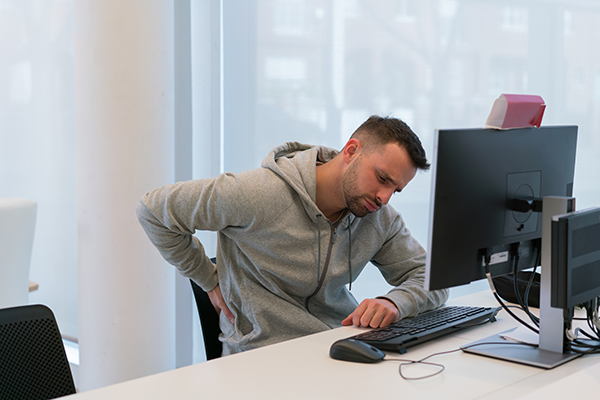How to Fix Failed Back Syndrome

When your back hurts, surgery can seem like the last best hope. If you’ve tried—without success—nonsurgical treatment such as rest, physical therapy or corticosteroid shots, surgery may be the last resort. Surgery to fix a herniated disc or spinal stenosis is safe and effective. But what happens when an operation doesn’t help, or even makes it worse?
It can happen. There’s even a name for it: failed back syndrome. It is also known as post-laminectomy syndrome (although it can also happen after a spinal fusion as well) and failed back surgery syndrome. Not only does your back still hurt, but also you feel like you’re right back where you started.
But don’t lose hope. At Edison Spine Center, you’ll have options for treatment even if a previous spine surgery has proven ineffective. Here’s what you need to know about failed back syndrome, how it happens and what you can do to reduce your risk.
What Is Failed Back Syndrome?
When you have surgery to relieve back pain or radiculopathy, it is usually because you have tried other, more conservative measures already. Many cases of back pain resolve themselves in a matter of weeks or months, so conservative treatment is usually the recommended initial therapy. Conservative treatment can include:
- Rest
- Activity modification
- Nonsteroidal anti-inflammatory medications (NSAIDs)
- Corticosteroid injections
- Physical therapy
If pain persists, a discectomy, laminectomy or spinal fusion procedure may be the next step. Failed back syndrome is the term for pain that persists even after surgery. It does not necessarily mean that the surgery was botched; more likely, it was ineffective.
Why Does Failed Back Syndrome Happen?
One of the most common situations in which we see failed back syndrome is after a spinal fusion surgery. The spine is not immediately, fully fused after spinal fusion; rather, surgeons have created an environment that encourages fusion, through the use of a tissue graft between two (or more) vertebrae.
For the vertebrae to fully fuse, the spine must be stabilized and immobilized to a degree. If the environment for growing new bone tissue is not quite right, the spinal fusion may prove ineffective. This is one of the main causes of failed back syndrome.
Another common scenario happens after a discectomy or laminectomy to relieve symptoms of a herniated disc when the patient has degenerative disc disease (DDD). The surgery may have been performed flawlessly, but DDD can affect multiple locations in the spinal column.
Sometimes patients have one disc herniation repaired only to find that another herniation has occurred after recovery from the surgery, or a more minor existing herniation was being masked by stronger symptoms, which the surgery addressed.
The risk for failed back syndrome rises with each surgery. According to a 2018 review in Asian Spine Journal, about half of initial surgeries are successful. That percentage, however, drops to 30 percent, then 15 percent, then 5 percent after the second, third and fourth surgeries.
Aside from the choice of surgery, the number of surgeries and the presence of other spinal conditions, the risk of failed back syndrome can be increased by a number of factors after surgery. In the short-term, some of these include:
- Infection
- Nerve injury
- Hematoma formation
In later stages, changes to the spinal column can affect the way a patient moves, which can cause further spinal problems after time.
Treatment Options After Failed Back Surgery
If spine surgery has been insufficient to relieve your chronic pain symptoms, you may feel as though you’re back at square one. After a failed back surgery, most clinicians will recommend conservative management once again, given the risks of subsequent surgery.
Nonoperative management after spine surgery is aimed at strengthening the patient’s core and increasing the spine’s range of motion. That means physical therapy. Medications to manage symptoms may also be recommended.
However, if your symptoms manifest mostly as radiculopathy—that is, pain radiating to the arms or the legs, as opposed to localized in the back—you have an additional option: spinal cord stimulation. A stimulator is an implantable device that sends mild electrical signals to nerve roots stemming from the spinal cord. These signals mask pain.
Research suggests that spinal cord stimulation is an effective management technique for people with intractable radiculopathy who have already attempted surgery. A 2014 study examined data from more than 16,000 people with failed back syndrome. A small subset of those underwent spinal cord stimulator implantation. The study suggests that spinal cord stimulation has fewer complications and shorter hospital stays than reoperation.
If you have pain that just won’t quit—despite surgery—you’re not out of options. Request an appointment at Edison Spine Center. We will perform a full workup and determine if spinal cord stimulation is an appropriate treatment for your failed back surgery, or if another treatment method will be more effective for you.
